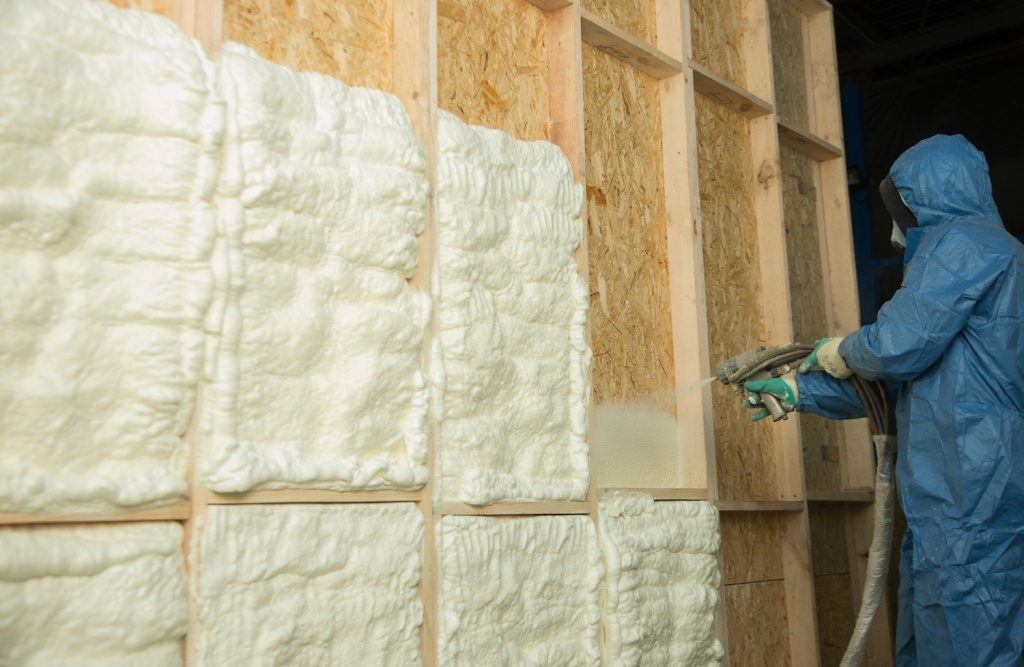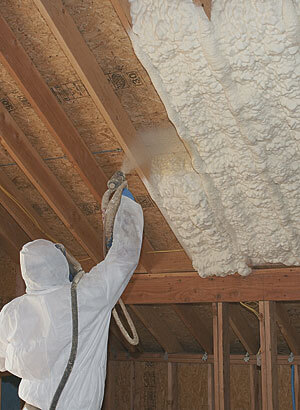Understanding the Benefits of Using Spray Foam for Insulation Projects
Understanding the Benefits of Using Spray Foam for Insulation Projects
Blog Article
Spray Foam: The Ultimate Option for Air Sealing and Insulation
Spray foam insulation has emerged as a leading option for reliable air securing and thermal insulation, providing an unique mix of buildings that set it in addition to typical methods. Its capacity to increase and load voids makes it specifically effective in preventing air leak, which can substantially impact energy efficiency. Recognizing the full range of its advantages, installment procedures, and contrasts with other insulation kinds is vital for making informed decisions. As we discover these aspects, the effects for both new building and constructions and retrofits end up being progressively considerable. What variables should influence your choice?
What Is Spray Foam?
Spray foam is a flexible insulation material that incorporates the concepts of air securing and thermal resistance to improve power performance in buildings. Composed mostly of polyurethane or other comparable substances, spray foam is applied as a fluid that expands upon call with surfaces, creating a solid, continual layer of insulation. This distinct building permits it to fill gaps, fractures, and gaps that typical insulation materials might neglect, providing an exceptional air seal.
There are 2 main types of spray foam: open-cell and closed-cell. Open-cell spray foam is lighter and a lot more adaptable, providing exceptional audio absorption and a lower R-value per inch - Spray Foam. On the other hand, closed-cell spray foam is denser, giving a greater R-value, moisture resistance, and added architectural stability to building components
The application procedure typically includes specific equipment, ensuring a smooth application that complies with numerous substratums, including metal, concrete, and wood. This versatility makes spray foam appropriate for both brand-new buildings and retrofitting existing frameworks. Its capability to create an airtight barrier dramatically adds to decreasing power consumption and boosting interior air quality, therefore making it a preferred choice amongst builders and house owners alike.
Advantages of Spray Foam Insulation
One of one of the most considerable benefits of spray foam insulation is its remarkable ability to develop a continuous air barrier, which properly reduces energy loss. Unlike traditional insulation products, spray foam broadens to load cracks and spaces, making sure that air leak is significantly lowered. This particular not only improves energy performance however likewise results in lower utility costs over time.
Additionally, spray foam insulation offers remarkable thermal resistance, adding to a more steady interior environment. Its high R-value per inch enables efficient insulation in confined rooms, making it optimal for attic rooms, walls, and crawl areas. The moisture-resistant residential properties of spray foam help stop mold and mold development, advertising healthier living problems.
Another vital benefit of spray foam insulation is its sound-dampening qualities (Spray Foam). It efficiently reduces noise transmission in between spaces, developing a quieter and extra comfy home atmosphere. The durability of spray foam also stands out, as it does not sag or work out in time, preserving its efficiency throughout its life-span
Just How Spray Foam Works
Understanding exactly how spray foam insulation functions is essential for appreciating its performance in air sealing and thermal resistance. Spray foam insulation includes 2 primary components: isocyanate and polyol resin. When these elements are blended, they go through a chain reaction that triggers the product to increase rapidly, developing a dense foam that fills up spaces, cracks, and dental caries.
As the foam increases, it sticks to surface areas, creating a closed seal that considerably lowers air infiltration. This particular makes spray foam insulation highly reliable at protecting against drafts and wetness infiltration, which can bring about power loss and damages gradually. Additionally, the closed-cell version of spray foam offers exceptional thermal resistance due to its stiff structure, properly minimizing warm transfer.
The one-of-a-kind buildings of spray foam allow it to satisfy irregular surfaces, ensuring extensive insurance coverage and a smooth obstacle. Consequently, spray foam insulation not only enhances energy efficiency yet also contributes to improved interior air high quality by reducing the buildup of irritants and contaminants. Ultimately, comprehending the mechanics behind spray foam highlights its duty as a superior choice for insulation and air sealing in both residential and business applications.
Installation Refine Introduction

Before installation, the room should be sufficiently my latest blog post cleaned up and prepped, ensuring that surfaces are devoid of particles, dirt, and wetness. Because pollutants can endanger attachment and overall performance, this step is crucial. Once the location is prepared, the application entails blending the two elements of the spray foam, which broadens upon contact and fills up gaps successfully.
Educated professionals ought to conduct the installation, utilizing specific equipment to guarantee consistent coverage and optimum density. Security safety measures, consisting of using safety equipment and ensuring appropriate air flow, are important during this process. After application, the foam commonly treatments rapidly, developing a strong barrier that boosts power efficiency.
Contrasting Spray Foam to Conventional Insulation
When evaluating insulation choices, spray foam insulation stands out in comparison to standard materials such as fiberglass and cellulose. Unlike fiberglass and cellulose, which can allow air seepage, spray foam increases upon application, filling gaps and voids to create an impermeable seal.
Additionally, spray foam gives a higher R-value per inch than traditional insulation kinds, using even more efficient thermal resistance in a thinner profile. This particular is specifically valuable precede with limited tooth cavity depth. Spray foam is immune to dampness and mold and mildew growth, which can be a considerable problem with cellulose and fiberglass, especially in damp settings.
However, spray foam insulation typically brings a greater upfront cost than its conventional counterparts. Home owners need to weigh this initial investment versus lasting energy cost savings and performance advantages. Ultimately, while both insulation kinds offer their function, spray foam arises as an advanced option Resources for modern insulation needs, especially in terms of air sealing and thermal effectiveness.

Final Thought
In recap, spray foam insulation represents an extremely effective option for attaining optimum air sealing and thermal resistance. Its special residential properties, including moisture resistance and noise dampening, make it suitable for various applications in both new constructions and retrofitting projects (Spray Foam). Although the initial expenses may be greater compared to standard insulation products, the long-lasting benefits, such as significant power cost savings and improved indoor air top quality, warrant the financial investment and highlight its value in modern-day structure techniques.
Spray foam insulation has actually arised as a leading option for reliable air sealing and thermal insulation, offering an unique combination of buildings that establish it apart from typical approaches.Spray foam is a versatile insulation product that combines the concepts of air securing and thermal resistance to enhance energy effectiveness in buildings.When assessing insulation choices, spray foam insulation stands out in contrast to standard products such as fiberglass and cellulose. Eventually, while both insulation kinds serve their function, spray foam arises as a much more advanced solution for modern-day insulation requirements, specifically in terms of air securing and thermal effectiveness.
In recap, spray foam insulation stands for an extremely efficient remedy for accomplishing optimum air sealing and thermal resistance.
Report this page